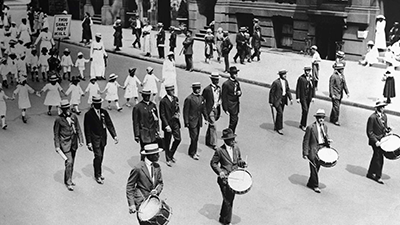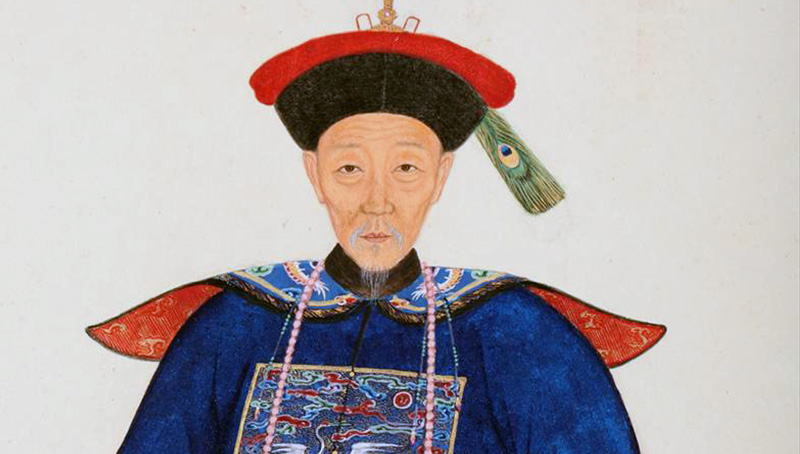Experiencing Colonialism
Teacher Resources
Driving Question: How did colonized people respond to colonial rule?
Colonialism wasn’t experienced the same way everywhere. Empires used a variety of strategies to enforce their rule and expand their reach. In the face of it all, individuals and communities found ways to preserve their identity, resist control, and adapt to survive.
Learning Objectives:
- Examine the different direct and indirect strategies used to resist colonialism.
- Assess a case study of how colonialism affected Ghana, both historically and today.
- Practice quick-sourcing to evaluate how Indigenous communities responded to imperial expansion.
Vocab Terms:
- colonialism
- color line
- consciousness
- indigenous
- racism
- resistance
- segregated
Opener: Experiencing Colonialism
To teach this lesson step, refer to page 2 of the Lesson 5.4 Teaching Guide.
As you prepare to learn about the ways that colonized people resisted, sort the thinking of imperialism into motives and goals.
Anti-Imperialism
To teach this lesson step, refer to page 3 of the Lesson 5.4 Teaching Guide.
Looking to provide feedback on your students’ adoption of the Three-Step Reading process? Read this conversation to learn how other teachers have handled this.
Challenging colonial power was no easy task, and there wasn’t just one way to do it. People and communities under imperial rule responded with protest, adaptation, negotiation, and even rebellion.
-
Guiding Questions
-
Before you read
Preview the questions below, and then skim the article. Be sure to look at the section headings and any images.
While you read
Look for answers to these questions:
- How were crops like corn and cassava used as tools of resistance?
- What were some goals colonial subjects hoped to achieve through resistance?
- How did rats become part of resistance efforts in Hanoi?
- In what ways did French education in Indochina backfire?
- How did people in the Southeast Asian highlands avoid colonial control?
After you read
Respond to this question: How did these examples challenge your understanding of what resistance can look like?
-
Guiding Questions
-
Before you watch
Preview the questions below, and then review the transcript.
While you watch
Look for answers to these questions:
- When did the British conquer the area that is now Ghana?
- What was the Customs House used for under British rule?
- How did some Ghanaians resist while working at the Customs House?
- What kind of transportation did the British use to control cocoa exports?
- Why was the trotro system important for Ghanaians under colonial rule?
After you watch
Respond to this question: How did the resistance shown in this video challenge your ideas about what colonialism looked like?
Key Ideas
Responding to Colonization
To teach this lesson step, refer to page 5 of the Lesson 5.4 Teaching Guide.
Take a look at the Continuity and Change Over Time page for all things CCOT!
Explore how colonized people navigated life under empire by balancing old and new identities. Then trace how labor and resistance changed alongside colonial rule.
-
Guiding Questions
-
Before you read
Preview the questions below, and then skim the article. Be sure to look at the section headings and any images.
While you read
Look for answers to these questions:
- What is the idea of dual consciousness, and what does it describe?
- How did different leaders disagree about how people of color should respond to racism and inequality?
- How did women contribute to debates about race, identity, and education?
- What was the goal of the Pan-African Congress held in 1900?
- How did some thinkers challenge ideas about race and identity during colonialism?
After you read
Respond to this question: How could the idea of dual consciousness help us understand identity today?
Defying Empire
To teach this lesson step, refer to page 9 of the Lesson 5.4 Teaching Guide.
Take a look at the Sourcing One-Pager for tips to teach this core historical skill.
Across the globe, Indigenous peoples responded differently to European imperialism. Practice quick sourcing as you uncover stories of resistance, resilience, and adaptation in the face of colonial rule.
Closer: Experiencing Colonialism
To teach this lesson step, refer to page 9 of the Lesson 5.4 Teaching Guide.
Use what you’ve learned about different strategies of resistance to explain how colonized people experienced—and fought against—foreign rule.







